Resources
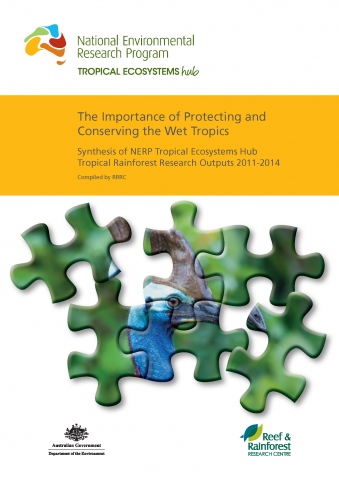 Carmody, J., Murphy, H., Hill, R., Catterall, C., Goosem, S., Dale, A., Westcott, D., Welbergen, J., Shoo, L., Stoeckl, N., Esparon, M. (2015) The Importance of Protecting and Conserving the Wet Tropics: A synthesis of NERP Tropical Ecosystems Hub Tropical Rainforest Outputs 2011-2014.
Carmody, J., Murphy, H., Hill, R., Catterall, C., Goosem, S., Dale, A., Westcott, D., Welbergen, J., Shoo, L., Stoeckl, N., Esparon, M. (2015) The Importance of Protecting and Conserving the Wet Tropics: A synthesis of NERP Tropical Ecosystems Hub Tropical Rainforest Outputs 2011-2014.

 TREAT Newsletter
TREAT Newsletter
January 2013
Recent decades have seen a big shift in the public perception of rainforests – from being overwhelmingly viewed as an obstacle to be cleared for agriculture or felled as a source of timber, to being valued by many and mostly protected from further clearing. It is now also several decades since TREAT members and other dedicated restoration pioneers started to develop tree-planting methods aimed at returning a cover of rainforest to former agricultural land in areas of ecological importance. During that time there have been many successes. These include the development of effective revegetation techniques and the creation of continuous ribbons of restored rainforest stretching across the agricultural landscape, and protecting now-flowing streams that were once degraded bogs.
Freeman, A.N.D., Catterall, C.P., Freebody, K. and Kanowski, J. (2011) How does landscape context influence the re-colonisation of rainforest restoration sites by birds?. Pp 165-168 in Majid, N.M, Ahmed, O.H., Sajap, A.S and Islam, M.M. (eds.) Proceedings of International Symposium on Rehabilitation of Tropical Rainforest Ecosystems. Online at: http://www.forr2.upm.edu.my/frp/images/abstract18.pdf.
Related to Project 12.2
Supported through MTSRF funding
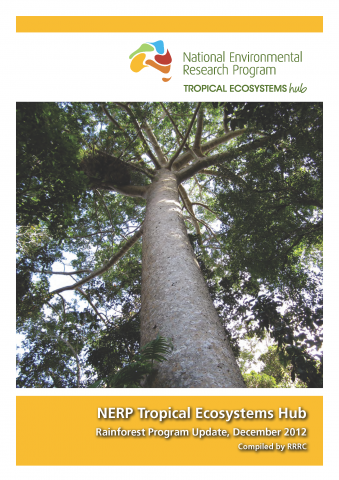 An update brochure of what's going on with the NERP Tropical Ecosystems Hub Rainforest projects.
An update brochure of what's going on with the NERP Tropical Ecosystems Hub Rainforest projects.
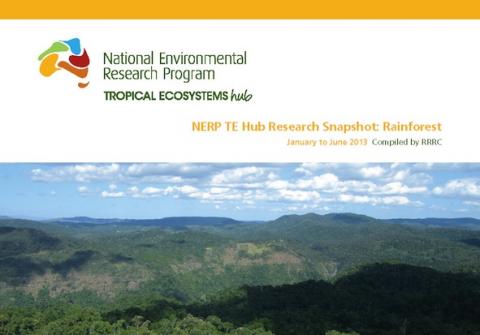 A snapshot of the research progress within the Rainforest node for January to June 2013.
A snapshot of the research progress within the Rainforest node for January to June 2013.
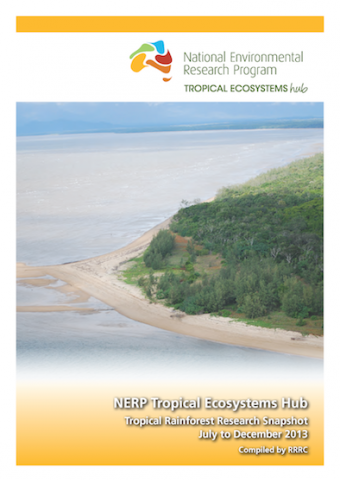 A snapshot of the research progress within the Tropical Rainforest node for July to December 2013.
A snapshot of the research progress within the Tropical Rainforest node for July to December 2013.

The project will assist decision-makers to more efficiently restore biodiversity to degraded rainforest landscapes by providing new knowledge about the outcomes of lower-cost natural regeneration (including potential for minimum intervention management) relative to higher-cost active reforestation (replanting). The outcomes of this project will enable planners to assess the costs, risks and benefits of different approaches to reforestation and choose the most appropriate method for any particular ecological and economic context.

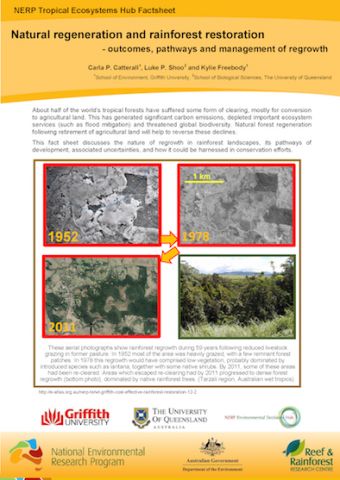 Catterrall, C.P., Shoo, L.P., Freebody, K. (2014) Natural regeneration and rainforest restoration - outcomes, pathways and management of regrowth.
Catterrall, C.P., Shoo, L.P., Freebody, K. (2014) Natural regeneration and rainforest restoration - outcomes, pathways and management of regrowth.

Catterall, C.P., Freeman, A.N.D., Kanowski, J., Freebody, K. (2012) Can active restoration of tropical rainforest rescue biodiversity? A case with bird community indicators. Biological Conservation. 146 (1), 53–61 [doi:10.1016/j.biocon.2011.10.033].

Anderson, A.S., Storlie, C.J., Shoo, L.P., Pearson, R.G., Williams, S.E. (2013) Current Analogues of Future Climate Indicate the Likely Response of a Sensitive Montane Tropical Avifauna to a Warming World. PLoS ONE. 8(7): e69393 [doi:10.1371/journal.pone.0069393].


